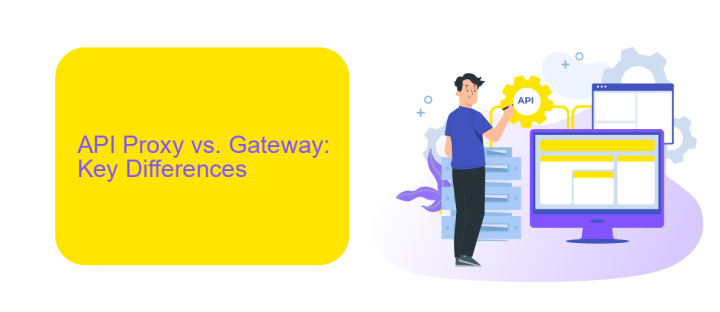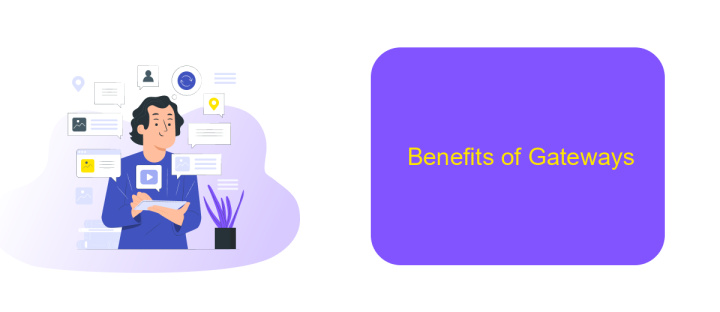Api Proxy Vs Gateway MuleSoft
In the realm of API management, understanding the distinctions between API Proxy and API Gateway is crucial for optimizing performance and security. MuleSoft, a leading integration platform, offers robust solutions for both. This article delves into the specific functionalities, advantages, and use cases of API Proxy and API Gateway within the MuleSoft ecosystem, providing insights to help you choose the best approach for your needs.
Introduction
In the modern digital landscape, businesses are increasingly relying on APIs to integrate various services and streamline operations. Two common approaches to managing these APIs are API Proxies and API Gateways. While both serve to facilitate API interactions, they differ significantly in functionality and use cases.
- API Proxies primarily act as intermediaries that forward client requests to the backend services.
- API Gateways offer a more comprehensive solution, providing additional features such as rate limiting, authentication, and analytics.
- Tools like MuleSoft Anypoint Platform simplify the implementation of both proxies and gateways.
Choosing between an API Proxy and an API Gateway depends on your specific needs and the complexity of your integration requirements. For instance, if you are looking for a straightforward way to connect different services with minimal configuration, a tool like ApiX-Drive can be highly effective. By understanding the distinctions and capabilities of each approach, businesses can make informed decisions that best support their API strategies.
API Proxy vs. Gateway: Key Differences

API Proxy and API Gateway serve distinct purposes in the API ecosystem. An API Proxy primarily acts as an intermediary that forwards client requests to the backend service without adding significant processing. It is mainly used for simple tasks such as routing, access control, and monitoring. In contrast, an API Gateway is a more robust solution that not only forwards requests but also offers additional functionalities like load balancing, rate limiting, caching, and even API composition. Essentially, while an API Proxy is suitable for straightforward use cases, an API Gateway is designed for more complex scenarios requiring extensive management and orchestration of API calls.
Another key difference is in their integration capabilities. For instance, services like ApiX-Drive can be integrated with an API Gateway to automate data flows and streamline API management, offering enhanced operational efficiency. API Proxies, however, may not support such advanced integrations and usually require manual configurations. Therefore, when choosing between an API Proxy and an API Gateway, it is crucial to consider the complexity of your API environment and the level of control you need over your API traffic and integrations.
Benefits of API Proxies

API proxies offer a range of benefits that significantly enhance the management and security of APIs. They act as intermediaries, providing a layer of abstraction between the client and the backend services, which helps in monitoring and controlling API traffic more effectively.
- Security: API proxies help in enforcing security policies, such as rate limiting and IP whitelisting, to protect backend services from malicious attacks.
- Analytics: They provide detailed analytics and monitoring capabilities, allowing organizations to gain insights into API usage and performance metrics.
- Traffic Management: API proxies enable efficient traffic management by routing requests to the appropriate backend services, ensuring optimal performance and reliability.
- Integration: With tools like ApiX-Drive, API proxies facilitate seamless integration with various third-party services, automating workflows and enhancing productivity.
- Scalability: They support scalability by distributing incoming requests across multiple servers, ensuring that the system can handle high volumes of traffic.
By leveraging API proxies, businesses can ensure robust API management practices, leading to improved security, better performance, and streamlined integrations. This ultimately results in a more efficient and scalable API ecosystem, capable of meeting the dynamic needs of modern applications.
Benefits of Gateways

API gateways offer a multitude of benefits that streamline and enhance the management of APIs. One of the primary advantages is the centralized control they provide, allowing for consistent security policies and traffic management across multiple APIs. This centralized approach ensures that all APIs adhere to the same standards and protocols, reducing the risk of security breaches and performance issues.
Another significant benefit is the ability to offload common tasks such as authentication, rate limiting, and logging from individual APIs. This not only simplifies the development process but also improves the performance of the APIs by delegating these resource-intensive tasks to the gateway.
- Centralized security and traffic management
- Offloading of common tasks
- Improved API performance
- Scalability and flexibility
For businesses looking to integrate multiple services seamlessly, tools like ApiX-Drive can be invaluable. ApiX-Drive facilitates the integration of various applications and services, ensuring that data flows smoothly between them. By leveraging the capabilities of an API gateway in conjunction with integration tools, organizations can achieve a more efficient and secure API ecosystem.
Choosing the Right Option for Your Use Case
When deciding between an API Proxy and an API Gateway in MuleSoft, it is crucial to assess your specific use case requirements. An API Proxy is ideal for situations where you need to enforce security policies, manage traffic, and monitor API usage without making significant changes to the backend services. It acts as an intermediary that passes requests and responses between clients and servers, providing a layer of abstraction and control over your APIs.
On the other hand, an API Gateway offers a more comprehensive solution, suitable for complex architectures requiring advanced functionalities such as request routing, load balancing, and protocol translation. It is particularly beneficial for microservices-based environments where managing multiple APIs can become cumbersome. For businesses looking to streamline their integration processes, services like ApiX-Drive can complement MuleSoft's API Gateway by providing easy-to-use automation tools that facilitate seamless data flow between various applications, enhancing overall efficiency.
- Automate the work of an online store or landing
- Empower through integration
- Don't spend money on programmers and integrators
- Save time by automating routine tasks
FAQ
What is the difference between an API Proxy and an API Gateway in MuleSoft?
When should I use an API Proxy instead of an API Gateway?
How do API Gateways handle traffic management?
Can I use both an API Proxy and an API Gateway together?
What tools can help with the automation and integration of API Proxies and Gateways?
Routine tasks take a lot of time from employees? Do they burn out, do not have enough working day for the main duties and important things? Do you understand that the only way out of this situation in modern realities is automation? Try Apix-Drive for free and make sure that the online connector in 5 minutes of setting up integration will remove a significant part of the routine from your life and free up time for you and your employees.


